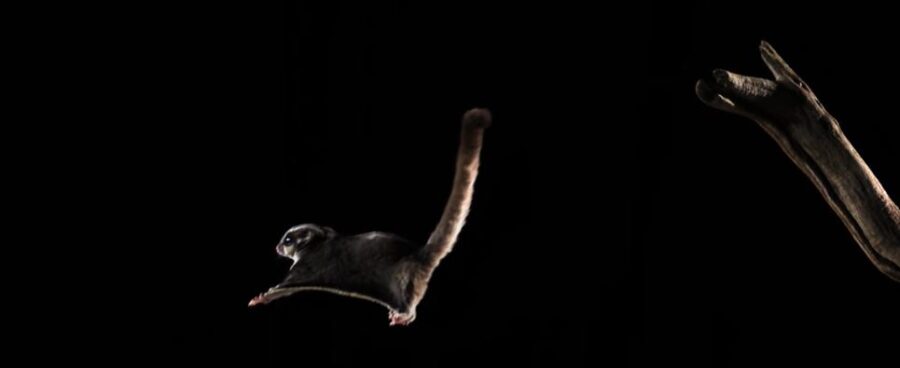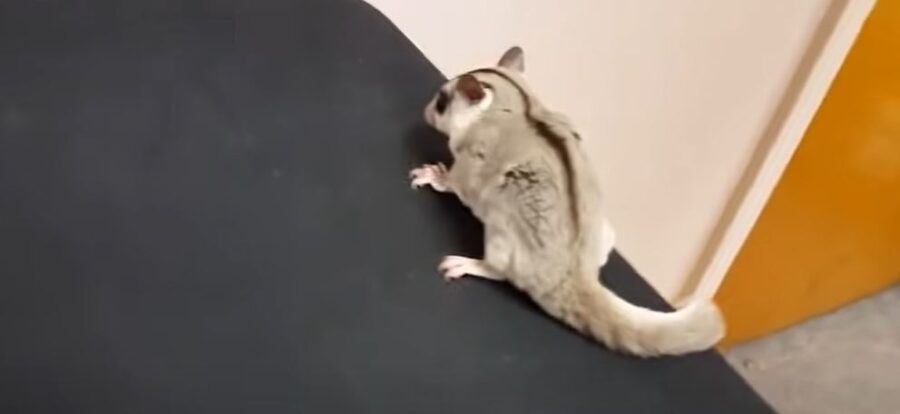Slow motion movements in nimble sugar gliders could be concerning. Why is my sugar glider moving slow?
This was a big problem in the case of my husband’s first sugar glider many years ago. Our most recent female sugar glider also moved slow, but it was not a serious issue and resolved quickly.
Let’s find out what happened and discuss why a sugar glider would be moving slow.
Why Is My Sugar Glider Moving Slow?
Here are the top 3 reasons why your sugar glider could be moving slow:
- Sugar gliders are not able to metabolize calcium very well. They can develop Metabolic Bone Disease (MBD), hind leg paralysis, calcium deficiencies and weakening of bones. This could make them have a difficult time moving.
- Slow movement may not be as serious as that. It could be because they are adjusting to their environment or they are not used to this new space just yet.
- They could be apprehensive and cautious about moving because they realize that they are in an open space or susceptible to potential threats that could be lurking nearby.
You have to make your sugar glider feel more comfortable in their enclosure first before they are able to explore new spaces. Make sure that they are receiving supplementation of calcium as well. A malnourished or undernourished sugar glider can experience slow movements.

Does a Slow Moving Sugar Glider Mean They Are Sick?
Sugar Gliders can get sick easily when their body temperature lowers, or if they are not receiving a balanced diet enriched with calcium.
They must also get enough sleep during the day because they are nocturnal creatures that need more time to remain active at night.
Taking out your sugar glider from their enclosure during the day and expecting them to appreciate the safe spaces that you are offering them to explore, may lead to them actually moving slowly and apprehensively.
They are sensitive to bright lights and noises as well. Slow movements are one of many symptoms of a stressed-out sugar glider.
You might also start noticing them self-mutilate, scratch or bite themselves and pull out their hairs. At this point, their immune system is being compromised and they are much more susceptible to developing viral, fungal or bacterial infections and other illnesses.
Does My Sugar Glider Have MBD?
A metabolic bone disease in a sugar glider means they are deficient in necessary vitamins and minerals. They can get these nutrients easier in the wild, but we have to try and mimic what they eat in captive settings, but this sometimes it doesn’t go as planned.
Your sugar glider will probably be deficient in calcium first. They are unable to metabolize calcium in most of the food that we are feeding them and we should supplement it or else it would lead to a visit to the vet who will need to administer calcium injections.
Before too long, metabolic bone disease can cause fracturing of bones that are weakened. If your sugar glider is in pain, they will move slower or not at all. The injectable calcium supplements act quickly and your vet can decide if this course of action may improve your sugar glider’s slow movements.

Calcium Supplements For Sugar Gliders Moving Slowly
When we brought our first sugar glider home, he was moving very slowly. He was nervous, cautious and slightly anxious about this new environment. After giving him a comfortable enclosure, chew toys, balanced diet calcium supplements we noticed that the movements returned to normal.
Sometimes the calcium deficiency leads to bones becoming weak. This happened to my husband’s original sugar glider when he was younger. He told me that she was getting sick too often and receiving calcium injections from the vet.
This helped her with her movements, but with time she ended up with hypoproteinemia and anemia. This meant she had too few red blood cells. Her kidney and livers were damaged and she had dehydration issues as well.
The vet recommended that she be put down to reduce further suffering. It was a sad day in his memory with his first sugar glider. This is why I was apprehensive at first when my brother brought home our first sugar glider.
Sudden death may result. Prevention and crucial information is found in my article here about sugar gliders suddenly dying.
What Happens To Sugar Glider Who Move Slow
Sugar gliders who move slow can develop serious illnesses. We have listed some of them below, but we still hope that it’s only due to the adjustment phase or a need for you to change their diet up a little.
- Calcium deficiencies
- HLP (hind leg paralysis,)
- NSHP (nutritional secondary hyperparathyroidism)
- MBD (metabolic bone disease)
The usual causes are due to stress or an improper diet. Dehydration may result when your lethargic sugar glider gives up eating or drinking as well.
They make remain only at the floor of the cage. You may also see their ears go down and stay that way for long period of time. Finally, their eyes may look squinty.
Constipation is another risk. Please check this article about it.

How to Tell if Your Sugar Glider Is Dehydrated
There is one way that I would like to share with you that you can find out right away if your sugar glider is dehydrated.
What I do is gently pinch the skin on the back of my sugar glider’s neck. This area is scruffy and should easily return to normal after I have pinched it.
If it stays up or slowly recedes down again, that means there’s a loss or lack of fluids. Your sugar glider is dehydrated.
You may notice them acting more lethargic, moving slower or clinging to the bottom of the cage. Their fur may also become more clumpy as they give up grooming as a result.
It is time for your sugar glider to be wrapped up and brought over to the vet. A professional would probably administer fluid injections, or a calcium injection.
Thank you for visiting PocketPetCentral.com for the best information to help you enjoy the life of your pocket pet companion in a fun, safe & healthy way.

